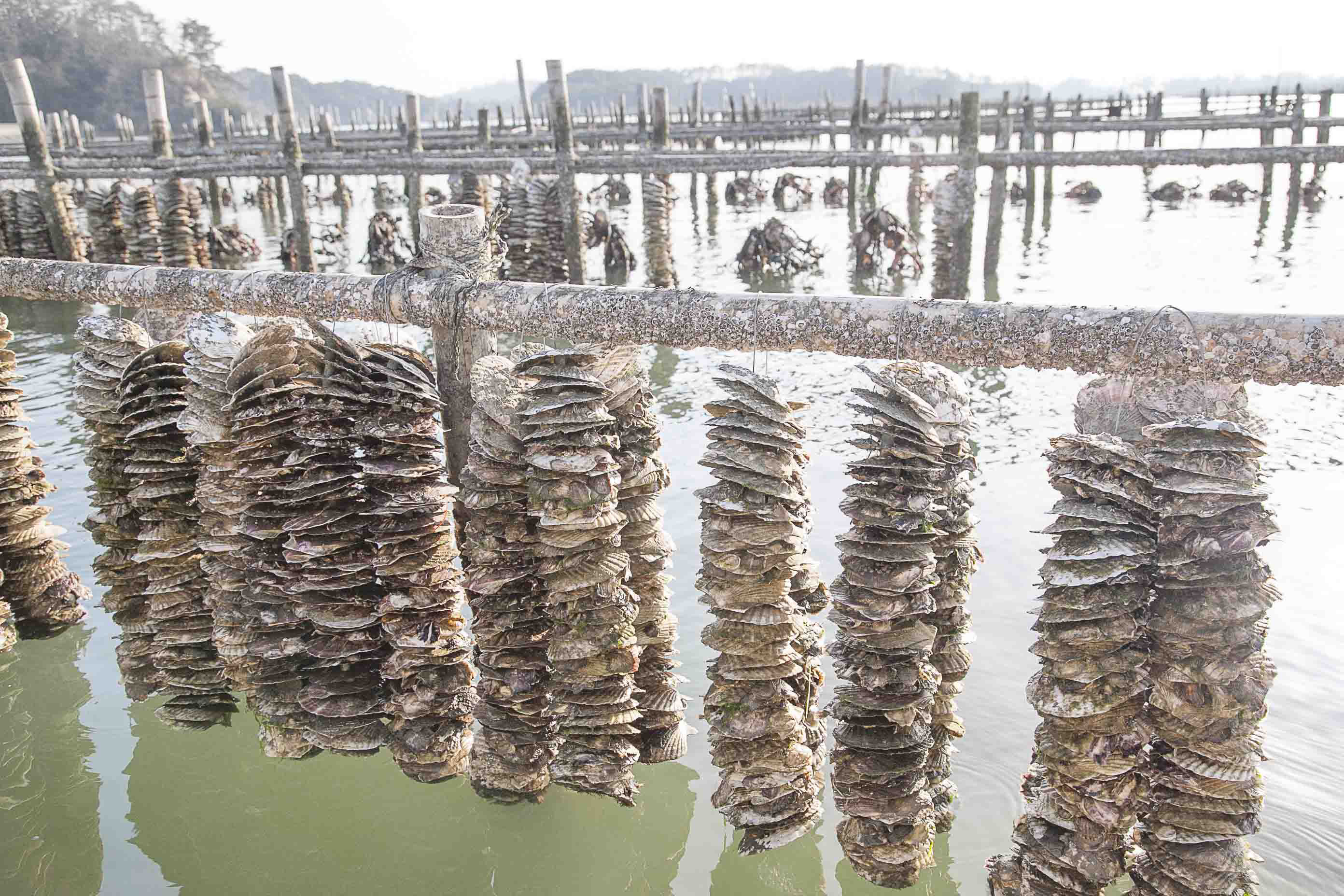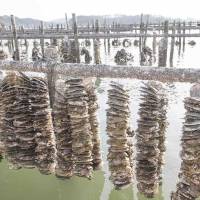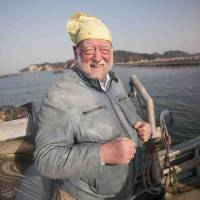Since the Great East Japan Earthquake on March 11, 2011, our C.W. Nicol Afan Woodland Trust, based in Kurohime, Nagano Prefecture, has been helping to relocate an elementary school in Miyagi Prefecture that was destroyed by the huge tsunami that followed.
The school, in Higashi-Matsushima, will be rebuilt to a modern design on what was once a densely forested hill — though I have insisted from the start on it being a timber construction. I have been equally adamant that we should, together with the city, also preserve and nurture the area of woodland around the school to create a diverse "natural classroom" that will be a lovely place for anyone to take a walk in as well.
We have been supported in this project, which has included a lot of research and work in the woods, by several individuals, groups and corporates, including the Asahi Beer Co. Over the last three years the people of the city have come to trust us and ask us for advice on many topics — as well as offer us plenty of good advice, too.
One of the queries I received via my Asahi friends was on the best wood to use for smoking oysters. As there is plenty of it locally, I suggested mountain cherry.
Of course, ever since the meltdowns at the Fukushima No. 1 nuclear power plant that followed those natural disasters in March 2011, we have all been concerned about the effects on the Tohoku region of northeastern Honshu, if any, of radioactive material escaping from there. After many inquiries, including to people I trust, I feel reasonably assured that coastal oyster farming has not been affected. However, as I am not an expert on this subject I will keep my ears and mind open on that one.
Of all the industries hugely damaged by the tsunami, the oyster-culture business has probably recovered faster than any other. That recovery, though, entailed a tremendous amount of work to remove, untangle and dispose of the massive amounts of debris, and then to rebuild the wooden rafts, or the staked-out bamboo fences from which the seed oysters are suspended. And that's not to mention the rebuilding of plants and warehouses; the acquisition of equipment, including boats, to replace what was lost or damaged; and the restoration of a distribution system.
The sea recovered very well, and if it were not for the ongoing Fukushima nuclear fiasco, the Tohoku oyster business would be truly flourishing. The oysters I've had from Higashi-Matsushima and nearby Kessenuma last year and this have been the fattest, juiciest and tastiest I've had in all my life.
Oysters, of which there are many species, are mainly an estuarine species. A mature oyster filters about 200 liters of water per day, taking out the plankton and other nutrients it needs. The oyster also removes heavy metals and biotoxins, which accumulate in their tissues. This is good for the marine environment — but not at all good for anyone eating an oyster from polluted waters.
By the time I was a boy growing up in Wales and England, pretty well all Britain's major rivers were heavily polluted, and although there were some surviving oyster beds, the shellfish — which had been a staple food of the poor in previous centuries — were extremely expensive. I never got to eat an oyster until I was 15, when I was an exchange student in the Bordeaux area of France. It was not until I came to Japan that I began to be able to eat oysters by the dozen.
The Japanese oyster, Crassostrea gigas, sometimes known as the Miyagi oyster, is native to the Pacific coasts of Asia.
The commercial cultivation of this species was introduced to the Pacific coast of North America in the 1920s by Kichimatsu Kishi, a remarkable entrepreneur who was the father of Asako Kishi, a very dear old friend of mine. Asako is a writer, editor and food critic who is known worldwide through her regular appearances as a judge on the "Iron Chef" series created by Fuji TV.
Nowadays, the Japanese oyster accounts for 90 percent of the world production of cultivated oysters and in many places, including along the western coast of Canada, it has largely replaced native species. This oyster, which has a wide temperature tolerance, spawns when the water reaches about 20 degrees. Then, a single female will release between 50 million and 200 million eggs to be fertilized by male sperm in the water and become free-floating planktonic larvae. After several weeks these tiny larvae, which can travel great distances on ocean currents, transform into tiny "spat," with the lucky ones finding a suitable habitat and surface to attach themselves to. Depending on their food supply, they reach marketable size within 18 to 30 months, though unharvested wild oysters can live for 30 years.
In the farming of Japanese oysters, big flat scallop shells are suspended in the water for spats to settle on — whence they become known as "seed oysters." Farmers in Miyagi Prefecture have traditionally sold these seed oysters all over the country, as well as growing the oysters to maturity themselves.
Recently, together with my Asahi Beer and other friends, I visited the oyster farm of Kouya Abe of the Umakaki Co. Young Mr. Abe, who has two preschool children, eats oysters every day, and is confident enough to feed them to his children. Although raw oysters are not supposed to be sold in April, a fisherman opened one on the boat to show us how fat they were, and I, ever the walrus, slurped it down to no ill effect. We then went on to consume several dozen oysters that had been steamed. Washed down with cold Asahi Dry beer, they were bloody marvelous, and for the next day or so the old walrus' mind was teased by fantasies and memories of loves past. So for me, anyway, oysters work their fabled romantic magic a treat.
The Tohoku oyster farmers really do their best to produce a great product, but it is ultimately the responsibility of the government to ensure that all pollution from the Fukushima plant and other sources that could ruin the industry and the health of people is stopped.
Meanwhile, Shigeatsu Hatakeyama — another old friend of mine who is an oyster and scallop farmer from Kessenuma, and whose son Makoto attended the environmental college I helped to set up — has for the last three decades been conducting a program to replace crowded conifer plantations with mixed deciduous woodland in the watershed area of the streams that feed into the bay where he grows his shellfish. He is a leader in the field, and an awesome public speaker, but all oyster farmers know the importance of healthy forest and streams.
For instance, young Mr. Abe measures water temperature and salinity and uses a microscope to determine precisely when to drop his strings of scallop shells into the water ready for the spats to colonize. But he has also inherited the lore of his father and grandfather, so he watches the wild mountain lilies in the hills, and also grows some in his garden. Then, when the lilies bloom, he says, the time is right — and he assures me this method checks out with the other, more scientific approach.
This all brings me to another, related topic, on which to end this month's Notebook — and that's the disposal of empty oyster shells.
In Japan this is a huge problem because the government classes the shells as industrial waste, which therefore cannot be put back into the sea. However, I maintain that as long as everybody agrees on the site, they should be returned to the ocean. In Chesapeake Bay, on the Atlantic coast of the United States, a huge oyster business once flourished in the adjacent states of Maryland and Virginia. The Americans, in trying to bring back that business, are now creating artificial oyster reefs using waste oyster shells in order to elevate the seabed by 25 to 45 cm and give the spats a healthy and stable habitat away from the muddy bottom on which to settle and grow.
As well, with climate change altering the chemistry of the oceans, which are slowly becoming more acidic, now more than ever they need the alkalis in the calcium from which these shells are composed. Why can't our Japanese bureaucrats learn some basic biology and good sense? And why can't our politicians take the lead in really doing something about the environment, the coast, the forests and the streams?




















With your current subscription plan you can comment on stories. However, before writing your first comment, please create a display name in the Profile section of your subscriber account page.